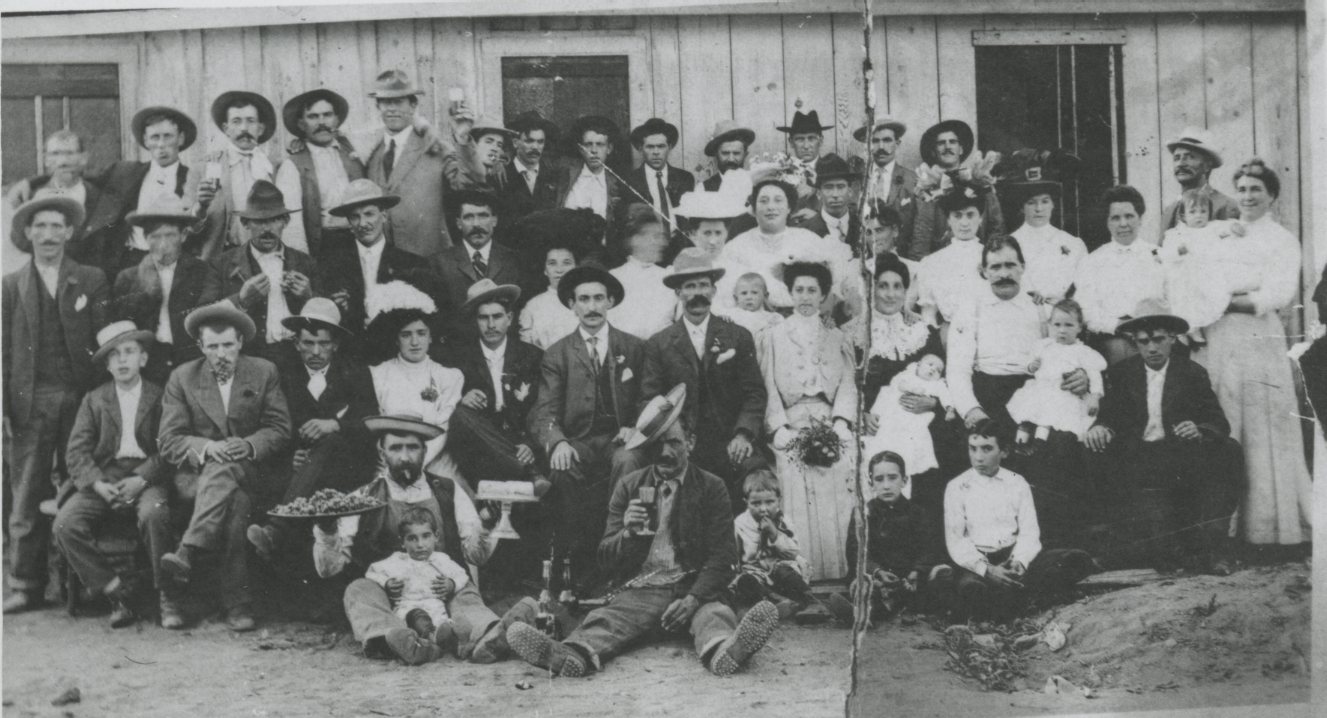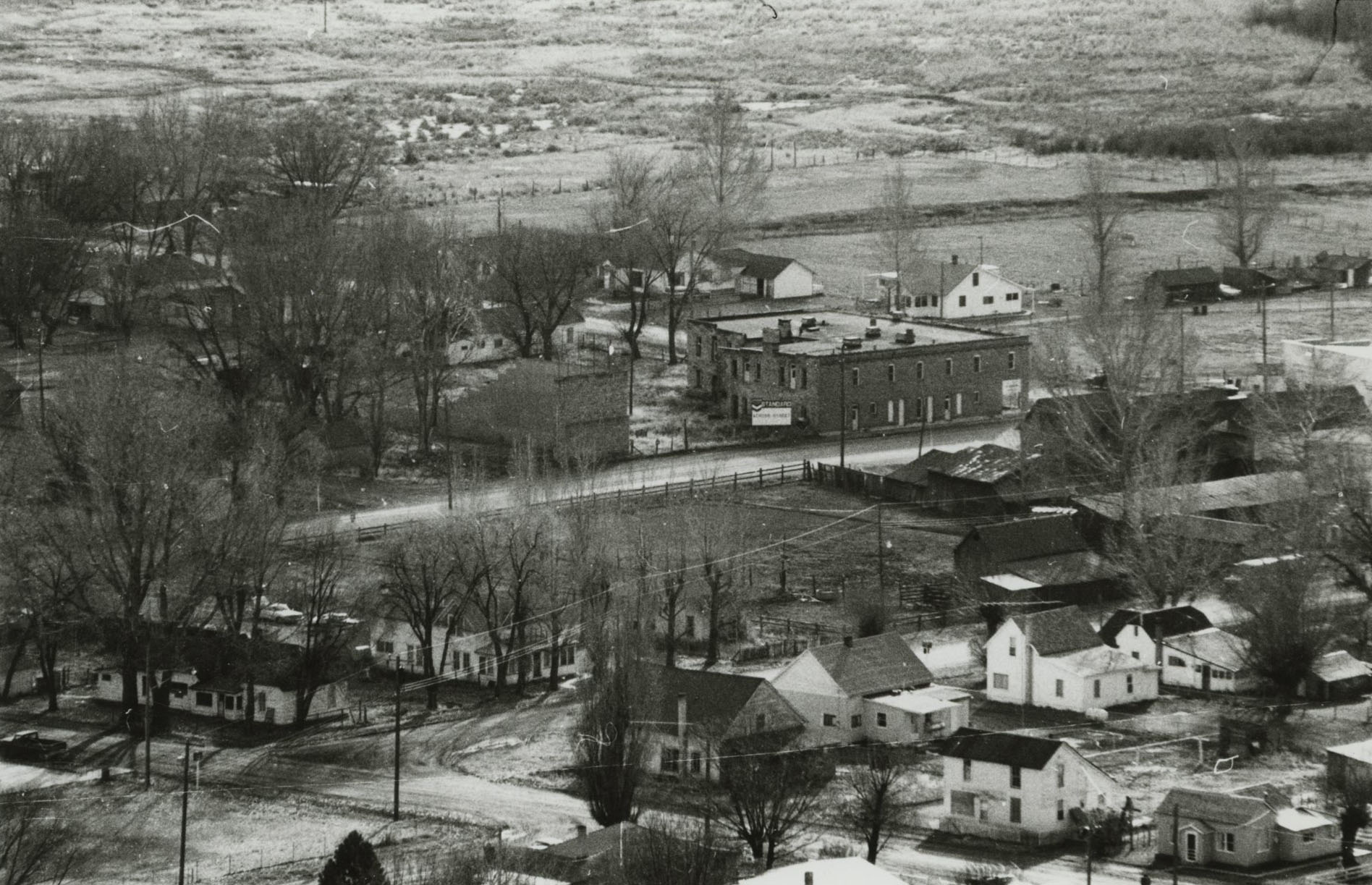Oregon’s earliest Basque settlers arrived in the late 1880s from northern California, Nevada, and southwestern Idaho. Many Basques who moved from California did so after the imposition of California's "fence laws" in the late 1870s. Those from northern Nevada and southern Idaho sought the relatively unsettled plains of southeastern Oregon. Almost all had entered the United States with plans to work the ranges as itinerant sheepherders until they could gain a foothold in America or return to their Basque homeland (Euskal herria) with the rewards of their toil.
As in other regions of Basque-American settlement, Basques opened boarding houses within a few decades after the first Euskaldun families settled in Oregon. Early boarding houses had private quarters for the host family; simple rooms with separate, shared bathing facilities; and a sizable kitchen-dining-living area where boarders dined together, played cards, and visited.
As the number of Basque immigrants increased between 1890 and 1930, so did the boarding houses, often expanding to include a bar and dining rooms lined with long tables where nonboarders joined boarders for meals. These establishments provided a location in which newly arrived herders could meet other Basques; speak their native Euskara; enjoy food and customs of their homeland; secure work with local sheep outfits; store their Sunday suits and extra gear; receive letters from home; recuperate from illnesses or injuries; and stop while en route to their final destinations.
Often located near train stations or major highways, the boarding houses provided a transit system for Basque immigrants. In the American West and on the eastern seaboard, the boarding houses were the Basques’ most important social-ethnic institution, and their number and size grew until the 1940s when immigration declined.
Oregon’s boarding houses were concentrated in Malheur and Harney counties. While fewer in number than in California, Idaho, and Nevada, most of the Oregon establishments enjoyed prosperity longer than those in neighboring states. In Jordan Valley, Ambrose and Maria Elorriaga opened their home to boarders in about 1910. In February 1914, Eulugio and Trinidad Arriola Madariaga left Boise’s Star Hotel for Jordan Valley, where they converted their new home into the area’s largest, full-service boarding house, which they operated until 1958. Another popular Jordan Valley establishment, nicknamed Marquina’s or the “big yellow house,” opened in the 1920s and operated until 1945.
About 100 miles north of Jordan Valley, in Ontario, the Echanis boarding house opened in 1922. Because of its size and its location on a major east-west highway for regional sheep men, by the 1930s the Echanis was one of the region’s best-known Basque establishments in what was known as the Nampa Triangle. For Basques, the Echanis were synonymous with Ontario. It was the only boarding house in town for five decades, keeping its doors open through the early 1970s.
To the south and west of Ontario, a few smaller establishments opened in the 1920s and 1930s. One appeared near the railhead at Crane, where sheepherders brought their flocks for transport. Another operated briefly in Vale. To the south near Steens Mountain, the Arregui family decided to stop running their sheep and used the profit from the sale to open a small boarding house. In all three establishments, the boarding houses served young Basques who worked as seasonal sheepherders, tending their herds between Malheur National Forest and Steens Mountain.
In the northern Harney County town of Burns, Felix and Cecilia Urizar opened the Star Hotel in 1926, with eight rooms, bathrooms on each floor, and a large dining-kitchen area. The establishment was sold to the Zabala family in the 1940s and enjoyed several owner-operators through the 1970s, including Joe and Paulina Lizundia, Lucy Garatea, Bernardo and Maite Andueza, and Domingo Lete. Not far from the Star, Marcelino and Margarita Osa operated the Plaza Hotel as a Basque boarding house from 1929 to 1945. There were also two Basque-owned rooming houses, Ebar’s and Larraneta’s Commercial, that offered room and limited board.
By the early 1970s, all of the Malheur and Harney County Basque establishments had closed their doors to boarders and roomers. Just as in other parts of the American West, the once flourishing Basque boarding houses have all but disappeared. The handful remaining in Nevada and California no longer take boarders but offer family-style meals, bar service, and occasionally host Basque-American celebrations. Just as Basques witnessed the dramatic decline of both Basque immigration and the sheep industry in the 1940s and 1950s, they also observed the gradual disappearance of what was arguably their single most important ethnic institution in America.
-
![]()
DeLamar Boarding House, Boise, Idaho.
Courtesy Oregon Hist. Soc. Research Lib., Orhi904747
-
![]()
Basque residents of Jordan Valley, c. 1914.
Courtesy Oregon Hist. Soc. Research Lib., 21730
Related Entries
-
![Basques]()
Basques
The first Basques to Oregon arrived in the late 1880s. These Euskalduna…
-
![Fernando (Basque trickster figure)]()
Fernando (Basque trickster figure)
Fernando is a trickster, the character in traditional Basque folk tales…
-
![Four Rivers Cultural Center and Museum]()
Four Rivers Cultural Center and Museum
The Four Rivers Cultural Center in Ontario is a nonprofit organization …
-
![Jordan Valley]()
Jordan Valley
The town of Jordan Valley stretches along Highway 95 in Oregon’s High D…
-
![Pelota Fronton]()
Pelota Fronton
The pelota fronton in Jordan Valley is a handball court built by Basque…
Related Historical Records
Map This on the Oregon History WayFinder
The Oregon History Wayfinder is an interactive map that identifies significant places, people, and events in Oregon history.
Further Reading
Douglass, William A. and Jon Bilbao. Amerikanuak: Basques in the New World. Reno: University of Nevada Press, 1975.
Echeverria, Jeronima. Home Away from Home: A History of Basque Boarding Houses. Reno: University of Nevada Press, 1999.
Zubiri, Nancy. Basque America: A Travel Guide to Families, Feasts, and Festivals. Reno: University of Nevada Press, 1998.





